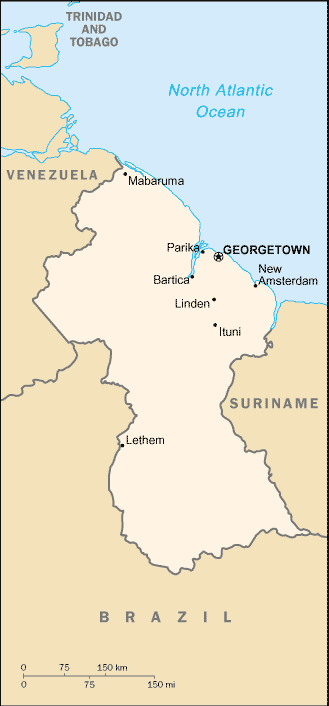Map:

Overview:
Originally a Dutch colony in the 17th century, by 1815 Guyana had become a British possession. The abolition of slavery led to black settlement of urban areas and the importation of indentured servants from India to work the sugar plantations. This ethnocultural divide has persisted and has led to turbulent politics. Guyana achieved independence from the UK in 1966, but until the early 1990s it was ruled mostly by socialist-oriented governments. In 1992, Cheddi JAGAN was elected president, in what is considered the country's first free and fair election since independence. Upon his death five years later, he was succeeded by his wife Janet, who resigned in 1999 due to poor health. Her successor, Bharrat JAGDEO, was reelected in 2001.
The People:
Population: 765,283
note: estimates for this country explicitly take into account the effects of excess mortality due to AIDS; this can result in lower life expectancy, higher infant mortality and death rates, lower population and growth rates, and changes in the distribution of population by age and sex than would otherwise be expected (July 2005 est.)
Age structure:
0-14 years: 26.4% (male 103,054/female 99,279)
15-64 years: 68.5% (male 263,953/female 260,000)
65 years and over: 5.1% (male 16,801/female 22,196) (2005 est.)
Religions:
Christian 50%, Hindu 35%, Muslim 10%, other 5%
Government Type:
republic within the Commonwealth
Leader(s) to pray for:
chief of state: President Bharrat JAGDEO (since 11 August 1999); note - assumed presidency after resignation of President Janet JAGAN
head of government: Prime Minister Samuel HINDS (since December 1997)
Source: The World Factbook
View All Countries